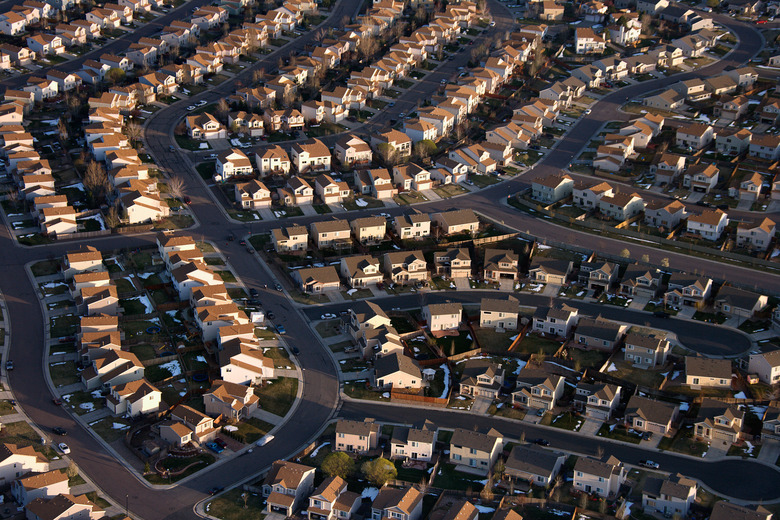What Is Urban Encroachment?
Urban encroachment, also known as urban sprawl, is a key concept in planning and land use. While definitions vary widely, urban encroachment is characterized by economic and business development outside of concentrated urban centers. Urban sprawl is also characterized by low-density housing and retail development in suburban areas adjacent to larger urban centers.
Characteristics of Urban Encroachment
Characteristics of Urban Encroachment
Policy analyst Anthony Downs has identified 10 traits of urban encroachment. According to Downs, urban encroachment is characterized by an "unlimited outward extension" of development beyond a compact urban area; "leapfrog development," in which residential development occurs far from the urban center and bypasses suitable parcels of land closer to the urban center; low-density residential and commercial development; dispersal of power among many small localities rather than one local government; automobiles rather than public transport as the dominant means of transportation; strip commercial development; unplanned land development with no central planning or control agency; large economic disparities and inequalities among localities; land use that is segregated into different zones such as residential and commercial; and a reliance on what Downs terms "trickle down" processes to provide housing to low-income residents.
Causes of Urban Encroachment
Causes of Urban Encroachment
While the causes of urban encroachment vary depending on the locale, there are some common factors. In the United States, a major cause of urban encroachment appears to be the desire for single family housing, especially large houses with large lawns. Encouragement of commercial development along major roads and highways, rather than in concentrated urban centers, also contributes to urban encroachment; strip malls and strip centers are most often the result. Lack of public transportation in many areas and Americans' over-reliance on their cars, also promotes urban encroachment.
Impacts of Urban Encroachment
Impacts of Urban Encroachment
Urban encroachment has several deleterious effects on the environment, though a lack of understanding of these effects appears to be a contributing factor in encroachment. At the most basic level, urban encroachment consumes thousands of acres of woodland and farmland, negatively effecting the animals and plant life that call them home. The reliance on automobiles that characterizes urban encroachment contributes to higher pollution from emissions as well. Groundwater quality suffers from development and industrial pollution can further erode groundwater and soil quality. Economic impacts of urban encroachment include the flight of commerce from urban centers, which may contribute to unemployment and urban blight. The dispersed nature of economic benefit from urban encroachment, as well as the fragmentation of power among many small localities, may lead to underfunded (and thus undermaintained) infrastructure, including highways and public services. Less tangible impacts of urban encroachment include a loss of community as people live further away from each other and in the relative isolation of single-family homes. This isolation and lack of connection can, according to some social scientists, negatively impact quality of life.
Solutions to Urban Encroachment
Solutions to Urban Encroachment
Planners have suggested several solutions to urban encroachment. These include public investment in public transit; recycling of existing buildings rather than continuous new construction; encouraging investment in urban centers as a way to bring businesses and residents back into these areas; and placing stricter regulations on developers so they are more accountable to the public.
Cite This Article
MLA
Harper, Susan. "What Is Urban Encroachment?" sciencing.com, https://www.sciencing.com/info-8758278-urban-encroachment/. 9 January 2018.
APA
Harper, Susan. (2018, January 9). What Is Urban Encroachment?. sciencing.com. Retrieved from https://www.sciencing.com/info-8758278-urban-encroachment/
Chicago
Harper, Susan. What Is Urban Encroachment? last modified March 24, 2022. https://www.sciencing.com/info-8758278-urban-encroachment/


